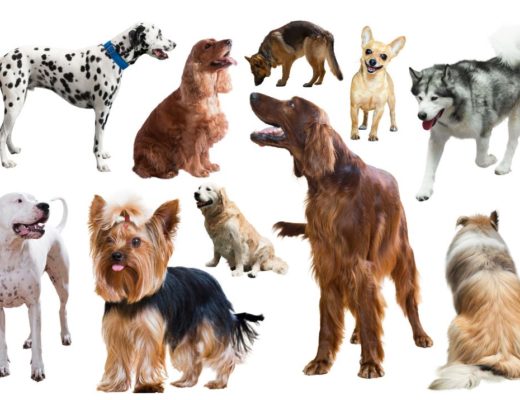Dogs are often considered as part of the family, but as pet owners, we often wonder about their age compared to ours. We have always heard the popular myth that one dog year is equal to seven human years, but is it really true? In this article, we will discuss the truth behind dog aging and how to calculate a dog’s age in human years.
The Myth Behind
The idea that one dog year is equal to seven human years has been around for a long time. However, this myth is inaccurate and doesn’t take into account the different stages of a dog’s life. The myth is based on the average lifespan of dogs and humans, but the rate at which dogs age varies depending on their breed, size, and overall health.
The myth originated from a 13th-century text by a monk who claimed that dogs live for about ten years and humans for about seventy years, which is where the 7:1 ratio comes from. However, this ratio doesn’t apply to all dogs, as smaller dogs tend to live longer than larger breeds.
The myth that one dog year equals seven human years is inaccurate and doesn’t account for breed, size, and overall health.
@8pawsclub How old is your dog?? #8pawsclub #dogpsychology #dogtraining #dogtrainer #dogbehavior #doglover #dogoftheday #dogstagram #training #puppytraining #workingdog #dogschool #positivereinforcement #onlinecourses #workdog
♬ original sound – Dog Behavior & Welfare Trainer
The Science of Dog Aging
Dogs age differently than humans, and the aging process varies depending on factors such as breed, size, and overall health. The average lifespan of a dog is around 12 years, but smaller breeds can live up to 20 years, while larger breeds may only live up to 8 years.
Factors that affect dog aging include genetics, nutrition, exercise, and overall health. As dogs age, they may experience changes in their physical and cognitive abilities, such as decreased mobility, hearing loss, and dementia.
There are several ways to estimate a dog’s age, including looking at their teeth, coat, and behavior. For example, a dog with white or gray hair around the muzzle may be in their senior years, while a dog with bright, clear eyes and a shiny coat may be in their prime.
Dogs age differently based on breed, size, and overall health, with an average lifespan of around 12 years. Physical and cognitive changes occur as they age.
How to Calculate
Calculating a dog’s age in human years is not as simple as multiplying by seven. There are different methods of calculation, and the most accurate method depends on the breed and size of the dog.
One method is to use a chart that compares the dog’s age to the human equivalent. Here is an example of a comparison table:
| Dog’s Age | Human Equivalent |
|---|---|
| 1 | 15 |
| 2 | 24 |
| 3 | 28 |
| 4 | 32 |
| 5 | 36 |
| 6 | 40 |
| 7 | 44 |
| 8 | 48 |
| 9 | 52 |
| 10 | 56 |
| 11 | 60 |
| 12 | 64 |
| 13 | 68 |
| 14 | 72 |
| 15 | 76 |
| 16 | 80 |
It’s important to note that this chart is just an estimate and may not be accurate for all breeds. Another method is to use a formula that takes into account the dog’s breed and weight. This method is more accurate, but requires more information about the dog.
For example, a small breed dog weighing less than 20 pounds can use the following formula:
- 12.5 x ln(dog’s age in years) + 3
Ln refers to the natural logarithm, which can be calculated using a calculator or online tool. For example, a 4-year-old Chihuahua weighing 10 pounds would be:
- 12.5 x ln(4) + 3 = 28.4
This means that the 4-year-old Chihuahua is roughly equivalent to a 28-year-old human.
There are also online calculators that can estimate a dog’s age in human years based on their breed and weight. However, these calculators may not be accurate for all dogs and should be used as a rough estimate.
Calculating a dog’s age in human years requires more than multiplying by seven. Charts and formulas are available but accuracy depends on breed and size.
Conclusion
In conclusion, the idea that one dog year equals seven human years is a myth that doesn’t accurately reflect the aging process of dogs. Dogs age differently than humans, and the rate at which they age depends on several factors, including breed, size, and overall health. There are different methods of calculating a dog’s age in human years, but none of them are perfect. It’s important to understand the aging process of dogs and provide them with proper care throughout their lifespan.
FAQ
Why is the 7:1 ratio inaccurate?
The 7:1 ratio doesn’t take into account the different stages of a dog’s life and the rate at which dogs age varies depending on their breed, size, and overall health.
What factors affect dog aging?
Factors that affect dog aging include genetics, nutrition, exercise, and overall health.
How can I estimate my dog’s age?
You can estimate your dog’s age by looking at their teeth, coat, and behavior.
Is the comparison table accurate for all breeds?
The comparison table is just an estimate and may not be accurate for all breeds.
What is the formula for calculating dog years in human years?
The formula for small breed dogs weighing less than 20 pounds is 12.5 x ln(dog’s age in years) + 3.
Can online calculators accurately estimate a dog’s age in human years?
Online calculators may not be accurate for all dogs and should be used as a rough estimate.
How can I provide proper care for my aging dog?
Proper care for aging dogs includes regular veterinary check-ups, a balanced diet, regular exercise, and providing a comfortable living environment.




